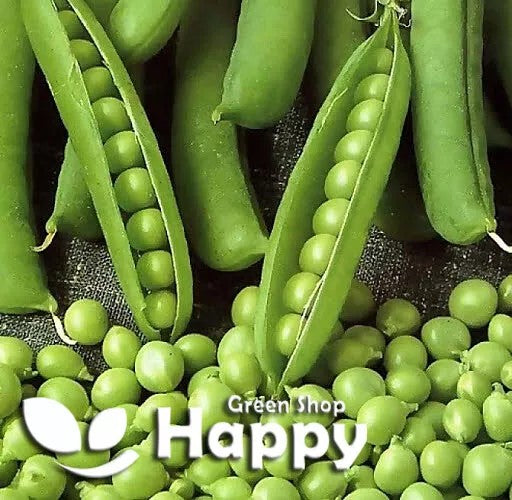Sort by:
435 products
435 products
Flowering Maple Mix – Seeds (Abutilon hybridum ‘Bellevue’)
Flowering Maple ‘Bellevue Mix’ (Abutilon hybridum) is a stunning half-hardy perennial known for its maple-like foliage and graceful, lantern-shaped blooms in shades of red, orange, yellow, and pink. Perfect for containers, conservatories, or sheltered borders, it flowers over a long season and attracts pollinators with its nectar-rich blossoms.
Why Grow "Bellevue Mix"
-
Exotic, lantern-shaped flowers in rich colors
-
Maple-like foliage for added interest
-
Long flowering season
-
Pollinator-friendly and versatile
Key Features
-
Type: Half-hardy perennial (Abutilon hybridum)
-
Height: 90–150 cm
-
Flowering: June–October
-
Position: Full sun or light shade
-
Uses: Borders, containers, conservatories, cut flowers
Ideal For
-
Conservatories and patios
-
Containers and sheltered spots
-
Exotic or tropical-style gardens
-
Pollinator-friendly planting
Sowing & Growing
-
Sow indoors: February–April in trays or pots
-
Germination: 20–30 days at 18–22°C
-
Transplant to 45 cm spacing after frost
-
Prefers rich, well-drained soil and regular watering
-
Can be overwintered indoors in frost-free conditions
Flower-of-an-Hour – Seeds (Hibiscus trionum)
Flower-of-an-Hour (Hibiscus trionum) is an eye-catching annual known for its delicate, pale yellow flowers with deep maroon centers that open in the morning and fade by evening. Blooming from summer to early autumn, this compact plant adds charm to borders, containers, and cottage-style gardens. Easy to grow and drought-tolerant once established, it attracts pollinators while providing fleeting, yet memorable, blooms that brighten any garden.
Why Grow "Flower-of-an-Hour"
-
Pale yellow flowers with striking maroon centers
-
Blooms open in the morning and fade by evening
-
Compact, drought-tolerant, and easy-to-grow
-
Attracts bees, butterflies, and other pollinators
Key Features
-
Type: Annual (Hibiscus trionum)
-
Height: 30–50 cm
-
Flowering: Summer to early autumn
-
Position: Full sun
-
Uses: Borders, containers, cottage gardens, pollinator-friendly gardens
Ideal For
-
Cottage-style and naturalistic gardens
-
Borders, containers, and small spaces
-
Pollinator-friendly garden designs
-
Gardens with morning bloom interest
Sowing & Growing
-
Sow indoors: February–April in trays or pots
-
Sow outdoors: April–May after frost
-
Germination: 7–14 days at 18–22°C
-
Thin seedlings 25–30 cm apart
-
Prefers well-drained soil in full sun
Floss Flower Dwarf White Seeds (Ageratum houstonianum)
The Floss Flower Dwarf White is a compact, easy-to-grow annual that produces clusters of fluffy, snow-white blooms throughout summer. Its neat, bushy growth and long-lasting flowers make it a favorite for borders, edging, and containers. The soft, cushion-like flowers also attract butterflies, adding movement and life to your garden.
What Makes It Special
-
Unique fluffy white blooms for a soft garden effect
-
Compact dwarf habit, ideal for edging and bedding
-
Long flowering season, from summer into autumn
-
Attracts pollinators such as butterflies
Key Features
-
Botanical name: Ageratum houstonianum
-
Common name: Floss Flower, Dwarf White
-
Seed count: Approx. seeds per pack
-
Height/Spread: 15–25 cm tall, 20–25 cm spread
-
Position: Full sun or partial shade; fertile, well-drained soil
-
Flowering period: June–October
Ideal For
-
Bedding and edging
-
Patio containers and window boxes
-
Pollinator-friendly gardens
-
Mass planting for carpets of white
Sowing Instructions
-
When to sow: February–April indoors
-
How to sow:
-
Sow on the surface of moist seed compost; do not cover, as light aids germination
-
Maintain 18–22°C; germination takes 7–14 days
-
-
Transplanting: Prick out seedlings and grow on in small pots, harden off before planting outdoors after frost
-
Spacing: Plant 15–20 cm apart
-
Care: Remove faded flowers to encourage continuous blooming
Floss Flower Dwarf Pink Seeds (Ageratum mexicanum)
The Floss Flower Dwarf Pink is a charming, compact annual that produces clusters of soft, fluffy pink blooms from summer through autumn. Its neat, mound-forming habit and long-lasting flowers make it perfect for borders, edging, containers, and pollinator-friendly gardens. A reliable and easy-to-grow plant that adds both color and texture to garden displays.
What Makes It Special
-
Unique fluffy pink flowers for a delicate garden touch
-
Compact dwarf variety, perfect for edging and bedding
-
Continuous flowering throughout summer into fall
-
Attracts butterflies and other pollinators
Key Features
-
Botanical name: Ageratum mexicanum
-
Common name: Floss Flower Dwarf Pink
-
Seed count: Approx. seeds per pack
-
Height/Spread: 15–25 cm tall, 20–25 cm spread
-
Position: Full sun or partial shade; well-drained, fertile soil
-
Flowering period: June–October
Ideal For
-
Bedding and edging
-
Containers and patio pots
-
Pollinator-friendly gardens
-
Mixed color flower beds
Sowing Instructions
-
When to sow: February–April indoors
-
How to sow:
-
Sow thinly on the surface of moist compost; do not cover, as light aids germination
-
Maintain 18–22°C; germination usually in 7–14 days
-
-
Transplanting: Prick out seedlings, grow on in small pots, then harden off before planting outdoors after frost
-
Spacing: Plant 15–20 cm apart
-
Care: Deadhead regularly to encourage continuous blooms
Fairy Primrose Mix – 200 Seeds (Primula malacoides)
Fairy Primrose Mix (Primula malacoides) produces a cheerful display of delicate, pastel-colored flowers in shades of pink, lilac, and white. Compact and low-growing, it’s perfect for borders, containers, or indoor pot displays. Hardy in cooler climates, it blooms in late winter to early spring, attracting pollinators and brightening gardens with soft, long-lasting color.
Why Grow "Fairy Primrose Mix"
-
Delicate, pastel blooms in pink, lilac, and white
-
Compact and low-growing habit
-
Long-lasting flowers in late winter to early spring
-
Attracts bees and other pollinators
Key Features
-
Type: Hardy annual (Primula malacoides)
-
Height: 15–20 cm
-
Flowering: February–April
-
Position: Partial shade to bright indirect light
-
Uses: Borders, containers, indoor pots, early spring displays
Ideal For
-
Indoor or outdoor container planting
-
Early spring garden color
-
Pollinator-friendly gardens
-
Borders, rockeries, and small beds
Sowing & Growing
-
Sow indoors: December–February in seed trays
-
Germination: 14–21 days at 18–20°C
-
Transplant seedlings into pots or borders when large enough
-
Keep soil moist and avoid direct harsh sunlight
-
Deadhead to encourage continuous flowering
Flax 'Bright Eyes' – 400 Seeds (Linum grandiflorum)
Add a splash of vibrant red with delicate black-centered blooms with Flax 'Bright Eyes'. These charming annuals brighten gardens, borders, and containers with a natural, meadow-like feel.
What Makes It Special
-
Brilliant red petals with a striking black center
-
Delicate, dainty flowers for a soft garden look
-
Easy to grow and long-flowering
-
Attracts bees and butterflies
Key Features
-
Height: 30–40 cm
-
Full sun loving, drought-tolerant
-
Blooms: late spring to summer
-
Annual, self-seeding
Ideal For
-
Borders, rock gardens, and wildflower meadows
-
Pollinator-friendly gardens
-
Cottage-style and naturalistic plantings
-
Containers and window boxes
Sowing
-
Sow outdoors after last frost
-
Cover lightly with soil and keep moist
-
Germination: 10–14 days
-
Thin seedlings to 15–20 cm apart
Fine Leaved Chives Seeds (Allium schoenoprasum)
Add fresh, mild onion flavor to your dishes with Fine Leaved Chives, a classic herb with slender, dark green leaves and delicate edible flowers. Ideal for salads, soups, sauces, and garnishes, this perennial herb is easy to grow and provides harvests year after year. Its compact growth habit makes it perfect for garden beds, borders, and containers.
How to Grow
-
Sow indoors 6–8 weeks before the last frost or directly outdoors in spring.
-
Prefers fertile, well-drained soil in full sun or light shade.
-
Sow seeds 0.5 cm deep in rows 20–25 cm apart.
-
Thin seedlings to 15 cm apart.
-
Harvest leaves regularly to encourage bushy growth.
Key Features
-
Perennial herb with fine, slender leaves
-
Mild, fresh onion flavor for culinary use
-
Compact and easy to grow in beds or containers
-
Long-lasting harvest year after year
-
Attractive edible purple flowers
Ideal For
-
Fresh salads, soups, sauces, and garnishes
-
Container and herb gardens
-
Gardeners seeking perennial, low-maintenance herbs
-
Adding flavor and ornamental interest to beds
Sowing
-
Best time: Early spring indoors or direct sow outdoors
-
Depth: 0.5 cm
-
Row spacing: 20–25 cm
-
Plant spacing: Thin to 15 cm apart
-
Harvest: From 8–10 weeks after sowing
Quick Tip
-
Trim leaves regularly to promote fresh, tender growth and prevent flowering if desired.
February Orchid – 400 Seeds (Orychophragmus violaceus)
Description:
Brighten early spring gardens with February Orchid (Orychophragmus violaceus). This hardy annual produces clusters of delicate, violet-purple flowers that bloom from late winter into early spring. Its compact, bushy growth habit makes it ideal for borders, rock gardens, and container plantings. February Orchid attracts pollinators and adds cheerful color when few other plants are in bloom.
Key Features
-
Delicate violet-purple blooms from late winter to early spring
-
Hardy, compact, and bushy annual
-
Long-lasting early-season color
-
Attracts bees and pollinators
-
Easy to grow from seed
Ideal For
-
Borders and mixed flower beds
-
Rock gardens and container plantings
-
Early spring color displays
-
Pollinator-friendly gardens
Sowing & Growing
-
Sow Indoors: January–February
-
Sow Outdoors: February–March
-
Germination: 7–14 days at 15–20°C
-
Height: 30–40 cm
-
Spacing: 20–25 cm apart
-
Light: Full sun to partial shade
-
Soil: Well-drained, moderately fertile
Care Tips
-
Water lightly until seedlings establish
-
Deadhead to encourage continuous flowering
-
Avoid waterlogging
-
Can self-seed for future seasons
English Lavender Seeds (Lavandula angustifolia)
A classic perennial, English Lavender produces fragrant spikes of purple flowers above aromatic silver-green foliage. Hardy and long-flowering, it’s perfect for borders, cottage gardens, and containers, attracting bees and butterflies while adding scent, color, and texture to any garden.
What Makes It Special
-
Fragrant purple flower spikes with aromatic foliage
-
Hardy, long-flowering, and drought-tolerant
-
Attracts pollinators, supporting bees and butterflies
Key Features
-
Botanical name: Lavandula angustifolia
-
Hardy perennial
-
Height: 30–60 cm (12–24 in)
-
Bloom time: Summer
Ideal For
-
Borders, cottage gardens, and rock gardens
-
Containers, pots, and low-maintenance garden designs
-
Pollinator-friendly and aromatic garden plantings
Sowing
-
Sow indoors Feb–Apr or outdoors Mar–May
-
Cover lightly with soil and keep moist
-
Germination: 14–28 days at 15–20°C
-
Thin seedlings 25–30 cm apart
-
Flowers the first or second season after sowing
Showing 288/435












